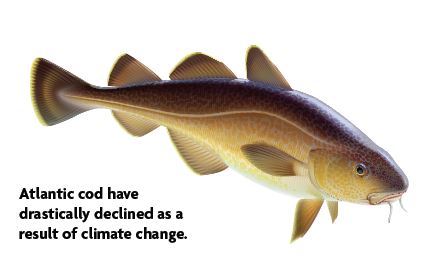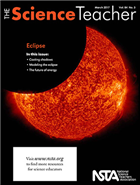The Green Room: How Climate Change Affects Our Diet
By sstuckey
Posted on 2017-03-20
 Last year was the warmest year on record. Consequences of a warmer world include melting glaciers, rising sea levels, droughts, flooding, heat waves, and extreme weather. But how does climate change affect our food?
Last year was the warmest year on record. Consequences of a warmer world include melting glaciers, rising sea levels, droughts, flooding, heat waves, and extreme weather. But how does climate change affect our food?
Time magazine describes a “climate-change diet” that may force us to give up some popular foods made scarce by warmer temperatures and extreme weather (Worland 2016). Conversely, some food sources actually benefit from increased temperatures or more atmospheric CO2. For example, potato crops in Northern Europe have a longer growing season these days.
Still, other food species may suffer. Coffee, for example, is sensitive to increased drought conditions and pest populations. Many commercially valuable fish species in the United States have moved north to cooler waters. The Environmental Protection Agency (EPA) reports that American lobster, red hake, and black sea bass have moved up the east coast by more than 161 km since the late 1960s. Atlantic cod populations have declined for several decades due to warmer ocean temperatures (Meng, Oremus, and Gaines 2016). The EPA offers an excellent summary of climate impacts on our food supply.
Climate change and crops
To look specifically at the effects of climate change on crops, use the climate hot map produced by the Union of Concerned Scientists. Or check out National Geographic’s graphical depiction and explanation of climate change effects on crop production around the world. Finally, the Johns Hopkins Center for a Livable Future has developed an extensive agriculture curriculum with a climate change lesson plan that covers the basics of climate change and its effects on food production.
Climate change and fish
Have your students listen to an 11-minute podcast featuring Roger Griffis, climate change coordinator at the National Oceanic and Atmospheric Administration (NOAA) Fisheries. He presents a firsthand account of how fisheries respond to changes in fish populations.
For a chemistry perspective, students can watch a video about the effect of ocean acidification on shellfish harvests. Allow your students to explore the Rutgers School of Environmental and Biological Sciences OceanAdapt website. Changes in distribution are clearly visible for more than 100 marine species, and students can plot data by species, region, date, latitude, and depth.
Conclusion
Although it is unclear exactly what a “climate-change diet” may be, evidence shows that warmer temperatures affect our food supply. What we eat and where those species live are among the many changes at hand in this warming world.
Amanda Beckrich (aabeckrich@gmail.com) is the Upper School assistant director, International Baccalaureate (IB) diploma program coordinator, and an environmental science teacher at Christ Church Episcopal School in Greenville, South Carolina.
References
Meng, K.C., K.L. Oremus, and S.D. Gaines. 2016. New England cod collapse and the climate. PLoS ONE 11 (7): e0158487.
Worland, J. Time. 2016. The Climate-Change Diet. December 26.
Editor’s Note
This article was originally published in the March 2017 issue of The  Science Teacher journal from the National Science Teachers Association (NSTA).
Science Teacher journal from the National Science Teachers Association (NSTA).
Get Involved With NSTA!
Join NSTA today and receive The Science Teacher,
the peer-reviewed journal just for high school teachers; to write for the journal, see our Author Guidelines, Call for Papers, and annotated sample manuscript; connect on the high school level science teaching list (members can sign up on the list server); or consider joining your peers at future NSTA conferences.
Disclaimer: The views expressed in this blog post are those of the author(s) and do not necessarily reflect the official position of the National Science Teaching Association (NSTA).


